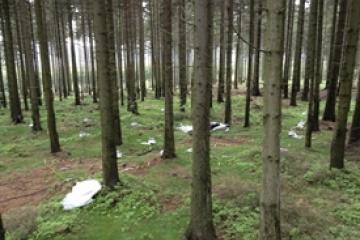Adjacent spruce (Picea abies) and beech (Fagus sylvatica) forest plots
Research on forest biogeochemistry has been conducting at Načetín research plots in Ore Mts. since 1992. The primary focus was to study impacts of acid deposition (“acid rain” caused by SO2, NOx a NH3 emissions) and eutrophication on nutrient cycling and vitality of managed spruce forests. Since 2003, identical research spread into the adjacent beech forest. In a monthly time step atmospheric deposition (S, N, P, DOC, DON, Na, K, Mg, Ca, As, Cd, Pb) and soil solution chemistry (S, N, P, DOC, DON, Na, K, Mg, Ca, Al, Mn, Fe, As, Cd, Pb) has been monitored since 1994. Besides long-term monitoring of element fluxes, both forest plots are widely used for specific research questions related to the human impacts on forest functioning. Currently, assessments of soil acidity and nitrogen availability on soil carbon cycling and sequestration were conducted by on-going sulphur, nitrogen and lime addition experiments. Since 2013, monthly measurements of CO2 soil efflux have been undertaken. Regular measurements of soil microbial community (bacteria and fungi) are available at both plots since 2013. Since 2017, in each forest stand, eight trees representing stand DBH variation were selected and equipped with devices continuously measuring sap flow. Furthermore, meteorological characteristics (temperature, moisture, solar radiation and precipitation) and soil physical characteristics (moisture, water potential, temperature) are available for both forests. All available data are intensively used for prediction of nutrient cycling in forests under changing environment (acid deposition, forest management, climate) by employment of dynamic biogeochemical models.

 Supported by Advance eLTER project number 739558
Supported by Advance eLTER project number 739558